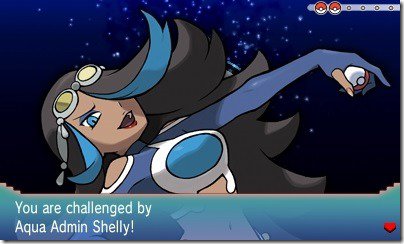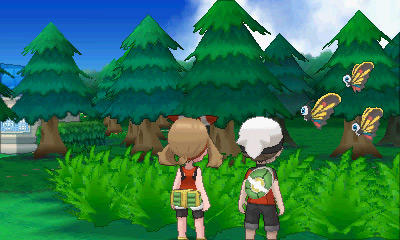‘Alpha Sapphire’ brings familiar fun and returning issues to ‘Pokemon’ fans

Title: Pokemon Alpha Sapphire
Genre: Strategy/role-playing game
Platform Reviewed On: Nintendo 3DS
Developer: Game Freak
Publisher: Nintendo/The Pokemon Company
Release Date: November 21, 2014
Note: This game is also available in the 'Omega Ruby' variant. The versions are almost identical, but I cannot comment on the quality of 'Omega Ruby' since I did not play it.
After 2013's innovative X and Y, Nintendo's blockbuster Pokemon series falls back into its comfortable pattern of iteration with Omega Ruby and Alpha Sapphire. This pair of remakes of the GameBoy Advance entries Ruby and Sapphire transfers Pokemon's Third Generation into the X/Y engine, and makes a handful of tweaks to the experience along the way. Much like every series entry before it, Alpha Sapphire should prove a hit with returning fans but will likely fail to earn any new converts.

The Pokemon series' ability to remain relevant despite the baby steps it takes forward with each release can be largely credited to the addictive core loop that involves capturing the titular wild monsters and then harnessing their abilities to take down foes' tamed beasts. As a "Pokemon Trainer," it's the job of the player to travel around the Hoenn Region to form a Pokemon team capable of taking down the region's eight gym leaders and, eventually, the imposing Elite Four and their Champion.
As has become Pokemon tradition, there's a shaky narrative that whisks players along on a wonky tale involving ancient, fabled Pokemon and a shady organization called Team Aqua (or Team Magma if you're playing Omega Ruby). The Ruby/Sapphire story is a step up from the dull, cliched mess that X and Y offered up; the yarn at least involves a few memorable characters and takes one or two interesting turns. The inclusion of Mega Evolutions spice up the old starter Pokemon, and add a bit of new meat to the game's narrative bones. By and large, though, the game features an excessive volume of dialogue considering how little of its audience is playing for the story. Expect to spend an obnoxiously long amount of time clicking through overlong, talk-heavy cut-scenes.
The game's narrative highlight is a short bonus chapter that comes after the completion of the main campaign. This section, entitled "Delta Episode," is well-crafted and suitably climactic, and features the most interesting lore of the entire game. Unfortunately, it also forces players to return to a few locations from the main game whose levels of quality don't exactly warrant repeat visits.
The journey to this point is, largely, quite enjoyable, albeit lacking in challenge. Though players could conceivably expect to see one or two game over screens near the starts of their adventures, the difficulty soon fizzles when the Exp. Share is acquired. A carryover from X and Y, this controversial item grants experience points to all of the Pokemon in the player's party, regardless of whether or not they participated in the battle at hand.

The Exp. Share alleviates much of the grinding that was once necessary in order to best one's Pokemon foes, but its unintended presence in the Ruby/Sapphire experience is apparent. Unless players choose to cripple their own abilities by turning this feature off (and it's on by default), players should see their Pokemons' levels skyrocket above those of almost every in-game opponent. The very existence of the Exp. Share item, while making the game more accessible to newcomers, compromises the core experience in a serious way for Pokemon vets.
Over the course of the main story, players will visit a variety of distinct locales, all rendered in the 3D-style of X and Y. Access to many locations requires the use of eternally present and always obnoxious HM moves, which take up a slot in a Pokemon's move bank and are difficult to forget once they've been taught. They're unnecessary annoyances that, after nearly two decades of Pokemon, no longer have any excuse to exist in their current forms.
The visuals remain nearly identical to those of their direct predecessors, for better or for worse. The visual style is sleek and distinctive, and depicts Pokemon faithfully despite its drastic departure from the 2D tradition. However, the visuals sometimes seem to outclass the 3DS hardware. Framerate drops during battles are frequent, and are worsened tenfold when the 3DS's glasses-free 3D is enabled, to the point where enabling the impressive 3D effects is never worth the visual downgrade it entails.

Furthermore, as in X and Y, the 3D effects are limited to certain areas. On a similar note, a disappointingly small volume of rival trainers are rendered with 3D models, with most relegated to 2D-cutouts that clash with the game's visual style. Also, many in-game events transpire through fade-outs to black, thus ensuring that Game Freak isn't forced to render complicated happenings. Each of these visual pitfalls exists for no good reason other than a lack of effort (or perhaps time) on the part of the developers; they would be inconsequential issues if not for their distractingly high rates of occurrence.
But Alpha Sapphire does make a few notable changes for the better. Most apparent is the decrease in frequency of random wild Pokemon encounters. Now, players can preview the Pokemon available in an area, and keep track of which beasts are present where with the new lower-screen PokeNav device. This addition makes it easier to plan which wild Pokemon encounters to engage in, easing the pain of tracking down the most elusive critters.
Another charming though less-consequential second-screen addition is the news feed that broadcasts stories from all over Hoenn region. It's a minor addition, but I yielded some amusement from seeing a goofy quote I'd given to a reporter hours earlier featured in the region's nightly newscast.

For players more interested in delving into the competitive Pokemon scene, Alpha Sapphire delivers a feature set almost as robust as its direct predecessors. Bracer items, battle points, an IV checker, Super Training, and the Day Care are all present and in fine form. The single omission on this front is the Friend Safari, which makes acquiring perfect-IV parent Pokemon more difficult than in X and Y.
Putting your perfectly-trained team to the test is as easy as ever thanks to the carryover of X and Y's online and local battle systems. Pairing up with friends or strangers is simple and usually lag-free, though random disconnects still occur on occasion. Unfortunately, though Alpha Sapphire and Omega Ruby are mostly cross-compatible with X and Y, Game Freak chose not to make all of the new moves and Mega Evolutions carry down to the older games. That means that, in order to use your Mega Swampert in a player versus player match, you'll need to pair up with an owner of Alpha Sapphire or Omega Ruby. It's an understandable though disappointing reality that could make friendly battles tough for players whose buddies haven't upgraded to the newest version.
Alpha Sapphire is everything one would expect out of a Pokemon remake. It rises on the strength of its core mechanics and the well-structured Third Generation quest, but stumbles over its desire to appeal to a broad audience, as well as over the same batch of annoyances that have plagued Pokemon for years. Still, fans of the series should have no trouble enjoying this return trip to Hoenn.
Score: 3/5 stars